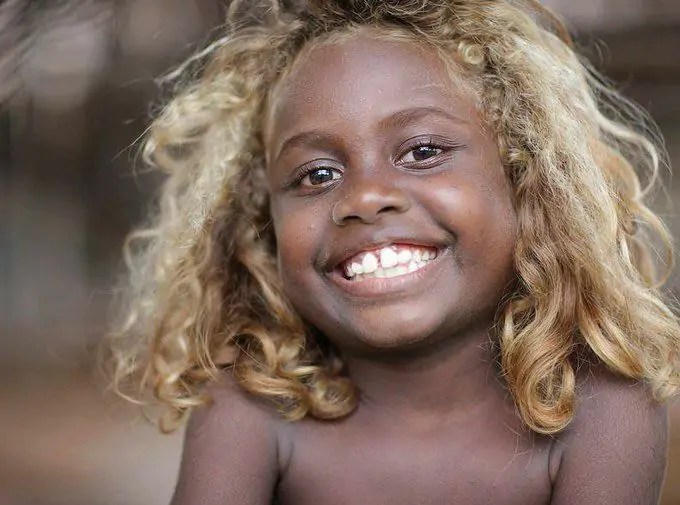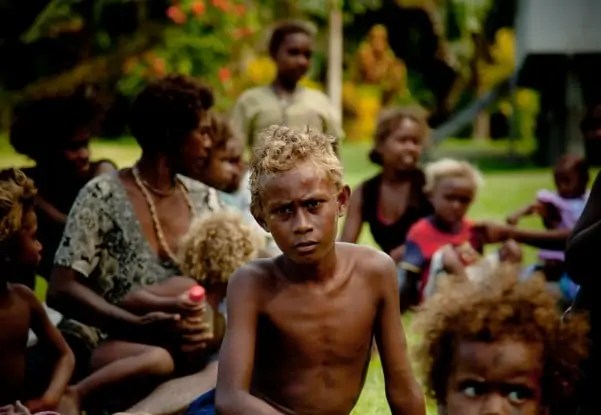Unveiling the Enigmatic Melanesians: A Journey into the Fascinating World of Oceania
Have you ever had the chance to encounter a mesmerizing sight—a blond-haired African-American? Such a spectacle is not a figment of imagination but a reality in Melanesia’s intriguing realm.
Nestled in the heart of the South Pacific, the Melanesian people, who embarked on a migratory journey thousands of years ago, have left an indelible mark on the cultural tapestry of Oceania. Let us embark on a captivating exploration of these remarkable islanders.

Melanesia, a region stretching from the western shores of the Pacific Ocean to the Arafura Sea and extending eastward to Fiji, comprises the islands of Vanuatu, the Solomon Islands, Fiji, and Papua New Guinea.
Among the indigenous Melanesian people, a distinction is made based on differences in genetic makeup, culture, and language, resulting in two primary groups: the Papuan-speaking communities and the Austronesian-speaking communities.
The Melanesian population of the Solomon Islands is particularly captivating due to their distinctive features—dark skin tones coupled with lustrous golden hair. The mystery behind their blond hair has given rise to various theories.
Some speculate that their hair acquired its radiant hue through the effects of sun and salt, while others propose that their diet, rich in fish, played a role.
Another plausible explanation suggests genetic inheritance from interbreeding between Melanesians and early American or European settlers on the islands.
The prevalence of blond hair among Melanesians is a remarkable phenomenon. Unlike in Europe and North Africa, where blond hair is relatively common, native communities outside these regions seldom exhibit this unique trait.

Interestingly, blond hair is more commonly found in Melanesian children than in adults, and similar to Europe and parts of Asia, it tends to darken with age.
Scientists have discovered that this can be attributed to a specific allele of TYRP1, a gene distinct from the one responsible for blond hair in Europeans.
The Melanesian islands have witnessed remarkable diversification and differentiation among their populations. These variations extend beyond the geographical boundaries of the islands and encompass language, culture, and topography.
The arrival of Polynesian ancestors on the islands and thousands of years of subsequent settlement have contributed to this rich diversity.
Notably, the Papuan-speaking communities have emerged as the most distinct, while the Austronesian-speaking tribes along the coasts have experienced greater intermingling.
Advancements in DNA analysis have shed light on the origins of the Melanesian people. The presence of Homo erectus races or sub-species, discovered in the late 20th century, suggests their potential influence in Southeast Asia, where the ancestors of the Melanesians eventually emerged.

The Melanesians’ unique cultural practices also set them apart from their neighboring communities. In contrast to the predominantly Islamic Malay and Javanese people in the western part of the archipelago, the Melanesians of eastern Indonesia adhere predominantly to Christianity.
Though their history reveals a past marred by practices such as cannibalism, headhunting, kidnapping, and enslavement—reminiscent of the Asmat tribe—the community has now embraced Christianity, with many residing in rural areas.
The Melanesian islands have experienced transformative shifts throughout their history, with evidence suggesting cultural, linguistic, and political fragmentation, even before European contact.
Over the past 2,000 years, hierarchical governance structures and trade networks have collapsed, leading to pronounced linguistic and dialectal divisions.
Christianization and Westernization, exerting pressure on indigenous communities, have assimilated the Melanesians into the global economic system.
Nevertheless, amidst the currents of change, there has been a resurgence of cultural nationalist beliefs among the Melanesians. Elites, driven by shared political and economic aspirations, unify across linguistic, cultural, and geographic boundaries, creating a unique blend of Westernized and local cultures.
The preservation or revival of antiquated transaction systems, along with the restoration of traditional cultural elements through art festivals, cultural institutions, and the resurgence of “kastom” (the Melanesian way of life), serve as sources of identity and a reclamation of their ancestral heritage.
In conclusion, the enigmatic Melanesians of the South Pacific continue to captivate us with their distinct features, cultural richness, and intriguing genetic traits.
From their blond-haired population to the diverse Papuan and Austronesian communities, they offer a window into the complex tapestry of Oceania’s history.
As they navigate the challenges of modernity, the Melanesians strive to preserve their unique traditions and reestablish their cultural identity. Their journey serves as a reminder of the immense diversity and resilience of the human experience.








